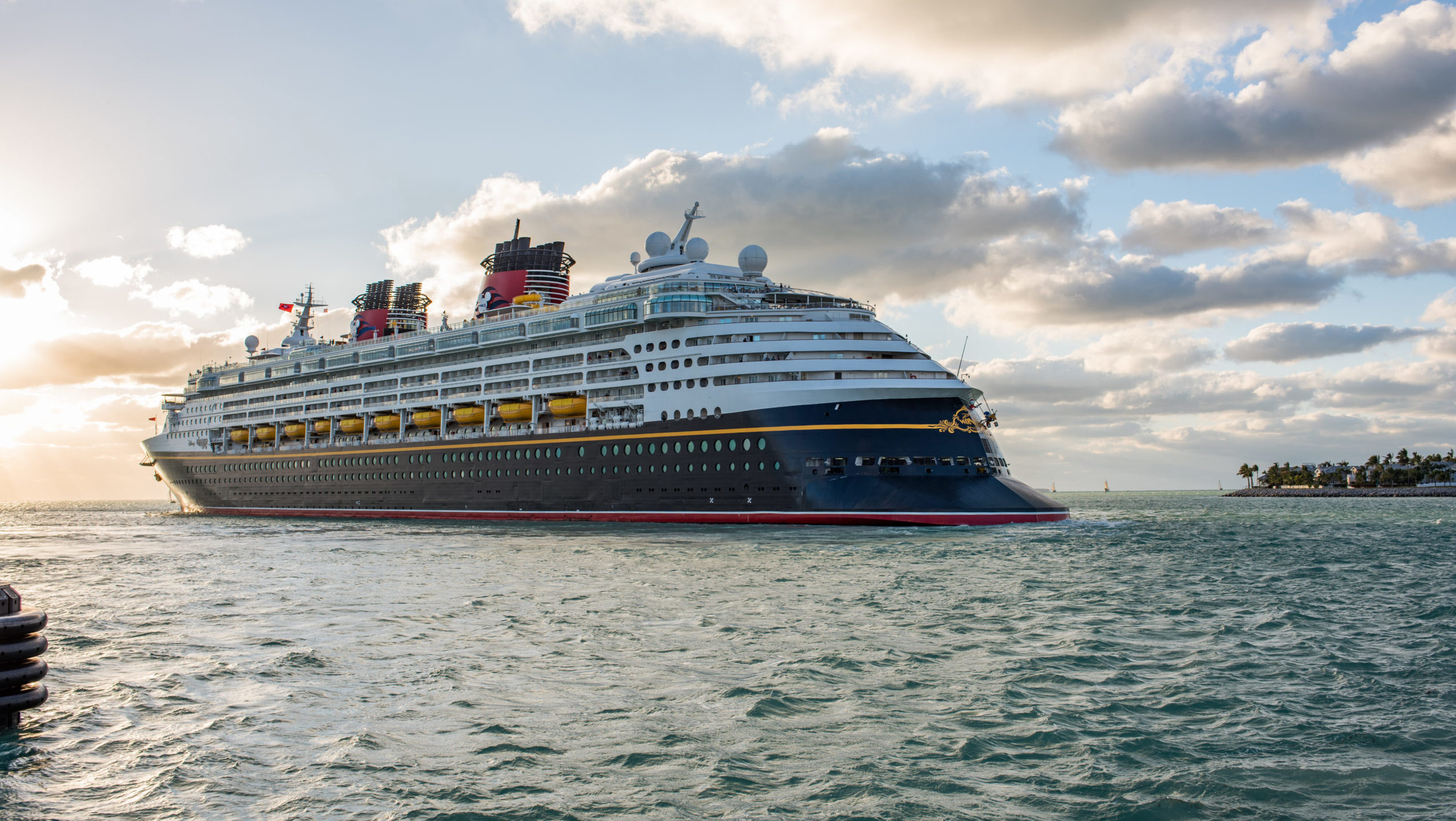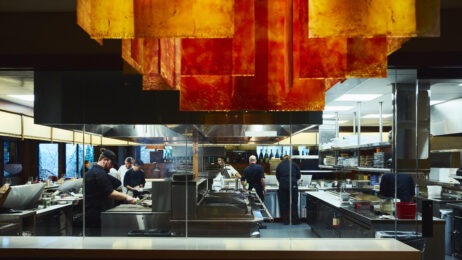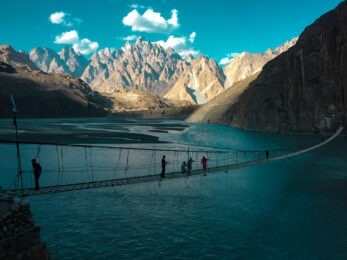Reward, of course, is the name of the game in incentives. But where once that rather predictably meant rounds of golf at a tony resort or umbrella drinks under a cerulean Caribbean sky, what’s this? Planting trees to replenish ancient forests with Fairmont Orchid or Fairmont Kea Lani in Hawaii? Releasing baby turtles into the Pacific from a hatchery or participating in numerous CSR activities at Posadas resorts in Mexico? Beach cleanups in Thailand?
Not that over-the-top accommodations, lavish cuisine and unforgettable settings will ever fall off the checklist of incentive planners, but reward has taken on a richer, often life-changing tenor in this rarefied sphere. Experiences top destinations, especially for millennials and GenZ-ers, who crave more of a story to take back home than a bottomless mai tai or an attaboy from the CEO for a winning putt.
Read More: Incentives in Space Are Coming
In short, these are not your mother’s—or father’s—incentive trips. And in the pandemic era, they’re more than simply the brass ring for a job well done.
SITE’s Top 10 Incentive Trends for the 2020s
- Sustainability is no longer just nice to have: It’s now a necessity in program design.
- Take the train: Flight shaming and eco-consciousness boost the alternative luxury transport experience.
- Consumption yields to contribution: Doing good becomes more desirable than swigging champagne.
- Experience outweighs destination: Less about where you want to travel, more about what experience do you want.
- Local experiences rule: Authentic local/cultural experiences are in.
- Education, opportunity to learn are key: Learning new skills or doing something that enhances your life is what it’s about.
- More business elements: Combining a meeting and the incentive to share business messages.
- Beyond the sales team: It could be the receptionist who goes.
- Second-tier destinations to combat overtourism: Bilbao instead of Barcelona, e.g.
- Well-being at the heart of incentives: Improving mental and physical health is the goal.
The Golden Age Is Coming
“There is definitely a strong fun and reward component, but incentive travel seems to have taken on a new meaning,” is how Danielle Boyles, director of sales and marketing at Grand Hyatt Vail in Colorado, puts it. “It’s also to create new bonds and be a restart to company culture that has likely become disjointed after 18 months of everyone working from home.”
That incentive travel in 2021 and beyond has taken on new roles makes perfect sense. And it may help to explain why, of all categories of event planning, incentives seem to be near the top in renewed bookings. “We’re seeing incentives come back stronger and faster than expected. The RFPs are flying in,” exults Kevin Edmunds, CIS, CITP, vice president of group sales for AIC Hotel Group and member of the international board of directors for Society for Incentive Travel Excellence (SITE). He predicts 2022 will be “strong in general,” and 2023 “the ultimate, the golden age for incentives.”
Pre-pandemic, the incentive trend line was already tilting firmly upward. Nearly 40 percent of U.S. businesses have used incentive travel for reward and recognition, according to Incentive Research Foundation (IRF). More impressively, 100 percent of “best-in-class” companies—those with the highest customer retention and sales growth numbers—offer group travel to recognize year-end sales success, reports Aberdeen Research.
Janet Traphagen, immediate past chair of IRF and president of Creative Group, an award-winning designer of incentive programs as well as other meetings and events, has seen it all in her 25 years in the industry. In 1970, when it was a small boutique agency in Appleton, Wisconsin, her company created one of the first incentive programs, for a wholesale food distributor. Today, Creative Group has hundreds of employees in offices throughout the United States and Canada.
“Reflecting on where our conversations have been going with our customers as a result of the Great Pause, they’re looking at the incentive structure,” Traphagen says. “They’re saying, ‘Does it still align with our shifting corporate priorities? Can you help me audit this incentive that’s been around for 10 or 20 years?’ We’re rethinking program design.”
The Shifting Incentive World
The most fundamental thing that’s changing about incentive travel is who gets to go. Sales teams are most assuredly still in the running, but over the past decade others began to join the quest. Incentive Federation research finds that, of companies that run awards programs, 53 percent use travel to recognize sales, 43 percent to recognize employees, 33 percent to recognize channel partners and 27 percent to recognize customer loyalty.
This trend of broadening the pool, the experts say, will only intensify.
“What’s changed,” Traphagen says, “is that we’re now in conversations with people with titles like experiential marketing and brand marketing, who want to make sure their brand is reflected in the travel.” She’s also “looking at the overall inclusivity in incentive travel. The younger generation has expectations that we include non-sales audiences. You’ll see more tiering in the incentive structure, in both qualifying accomplishments and rewards.”
Edmunds agrees. “Company culture is taking a shift,” he says. “It comes with a shift in demographics. It’s about getting other departments, other people in the room. That’s when innovation happens. Whether it’s finance, HR, whoever. In direct-selling companies, it’s the salespeople who will be rewarded first. But in places like the Midwest, in industries like automotive and food service where there’s a long supply chain, we’re seeing that it’s not just sales who are being included.”
Then he adds, “Nothing replaces face-to-face. The bottom line is, so much ROI happens as a result of an incentive trip, even though word-of-mouth back at the office is hard to quantify. But it’s been noticed during this period of not being in the office that word-of-mouth makes a difference.”
IRF surveys show that travel and experiences are more prized than cash rewards—86 percent to 14 percent, respectively. But what kind of travel and experience?
“Pre-Covid, we were seeing being more intentional around a participant’s well-being,” Traphagen continues. “That came in the form of more personal choices, and less traditional activities like golf and spa. But in the present and the post-Covid era, it’s an evolution toward being more brave. We’re calling it mental health. There’s power in naming it, in declaring that there’s a mental health crisis. We’re bringing more of that humanity into the design for a personal connection.”
In other words, after what we have all been through, professionally and personally, healing is needed even by top performers. Companies are encouraging recharging and rejuvenation. ‘“This is your chance to get away,’ they’re saying,” notes Edmunds. “In the U.S., golf through the pandemic has been huge, and I still see golf being very important going forward.” But the workforce is changing, he agrees. You might think a splendid 18 holes on the links or a spa day is just what the doctor ordered, and for some people, you’d likely be right.
“But wellness and self-care are more than golf and yoga and cross-fit,” Edmunds continues. “It’s also the food you serve, the drinks. Vegan and gluten-free are becoming more and more popular.”
For others, it’s empathy for, and insight into, the lives of others that is the best medicine.
Read More: The Meeting in Your Attendee’s Head
As for what that looks like, Traphagen cites a pioneering program her company has managed for a decade. “It’s still a great example of this,” she says. “The customer is in the coffee business, and the reward is called ‘The Origin Trips.’ Top store managers get to go to Costa Rica or Rwanda or elsewhere the beans are grown. They’re welcomed and greeted by the local communities in accordance with their traditions. They get to know the people who live and work there. It’s totally reflective of their brand, their product and their culture, and the trips are so emotional and life-changing. And before they leave, they always contribute with back-to-school items or by planting gardens.”
It doesn’t take a trip to the developing world. “The emphasis on experience is not new,” Edmunds asserts. “It started a few years back in mainstream destinations. But now it’s getting into local culture as well.” DMCs, he says, have never been so important to an incentive planner. “They know their destinations best.”
CSR activities are also not new, but “it wasn’t talked about,” Edmunds says. “It’s like sustainability. It’s part of doing business now. Participants want to do it and have it in their itinerary.”
When it comes to these deeper dives into local communities, it’s often not just the primary trip winners who take part. “We’re seeing more families included in trips,” Traphagen says, and they are often invited to share in the giving back. This trend does have its challenges. “There’s the issue of defining who qualifies. Is it children and spouse only? Extended family?” Most of her customers still hew to the 18-and-older rule, due to liability concerns raised by company legal departments. “But this, too, is changing and easing,” she adds.
ROI: Elephant in the Room
Like F2F meetings everywhere, justifying the ROI of expensive incentive travel has long been the bane of planners and their corporate clients, yet company executives continue to demand quantifying the cost versus benefit. Traphagen takes her stab at it this way: “Nobody likes an answer that starts with ‘it depends,’ but ROI really does depend on how the program is designed. It depends on what behaviors are targeted.”
Measuring ROI, as all incentive planners know, is easiest in the most traditional arena for incentives—sales. Return on investment equals the incremental gain over incremental cost. Any sales bump can easily be compared to the cost of the incentive program.
How ROI is calculated when the pool of incentive travelers is broadened to non-sales roles becomes more challenging. Employee attitude surveys and retention rates can be among the tools that help quantify these investments, and experts predict heightened emphasis on creating and using such tools to solidify the business case for incentive travel. Yet Traphagen argues, “I’m not sure ROI as a financial measure ever tells the whole story of the incentive. It’s about inspiring and changing human behavior. Incentive travel must also be recognized for its intangible value.”
Yes, Incentives Are Virtual, Too
Is an incentive really a reward when participants are watching a screen at home in their sweats? That’s the question incentive planners had to answer when pandemic lockdowns and travel bans sent the iron grates crashing down at departure and arrival gates around the globe.
Like meeting profs everywhere, they learned to improvise and innovate in the flash of an eye. And, no surprise, a virtual experience can still register as a privilege and rewarding perk.
“So, yes, we pivoted to virtual to achieve the ultimate goal of our customers, who still needed to stay connected with those who turn the wheels of their businesses,” Traphagen says. Her company pulled off several recognition events online, including private concerts (Keith Urban for an auto company, for instance), game shows that included family members (“we gave away more than $1 million”) and celebrity chefs lessons (with home ingredients sent out beforehand).
“With virtual,” she continues, “you obviously get broader reach and lots of data flows in, especially with features like chat and games. Executives at our customer companies loved being able to reach their audiences, whether from their offices or in a studio we created.”
Will virtual incentives continue to be part of the incentive toolkit? “It’s never going back to just what it was,” Traphagen declares, not when companies can reach, say, 1,000 participants virtually when before they were rewarding only 250 in person.
Technology is also proving valuable in enhancing the in-person experience. Scott Lockey, senior director for partnerships at Cvent, recently co-led a webinar titled “Tech and Incentive Travel: An Unlikely Partnership?” He made the point that a virtual component before or after the actual trip is opportunity for enhanced connection and impact. And if some participants are virtual only, it gives them the chance to interact with—and, hopefully, be inspired by—those who get to travel.
Lockey also recommends harnessing technology to incent those who are likely to qualify for incentive travel. “What data is available to create personalized experiences?” he asks. Today’s tech gives planners and their customer companies “the ability to know what you did leading up to, at and after an event.” The planning team can “associate points to behaviors” to help determine who really deserves an incentive reward—especially in organizations such as associations, for example, where engagement is the success driver more than sales.
He also foresees AI-driven personalization of rewards on the near horizon. “AI can recommend an activity and curate content for better experiences,” he says. It might suggest who a participant should network with, or particular activities, for instance, to capitalize on the most important experiences for each participant to build loyalty and boost future performance.
If embraced, tech will also prove to be a valuable ally to planners in measuring ROI. “From the planner side, tech is making the incentive experience easier, more intuitive,” as Lockey puts it, “but it can also provide the right data to validate the value of the incentive industry.
“If we aren’t taking advantage of this, it’s a miss.”
Building Incentives Better
Just as sustainability and CSR have become newly encoded in the incentive DNA, other opportunities can elevate these experiences beyond the shiny junkets of years past. “When does DEI, for instance, play a role here?” asks Traphagen. Many companies are being more focused on matters of diversity, equity and inclusion with hiring, suppliers and so on—but can it extend into the incentive travel space? “Let’s say the trip is to Paris or maybe Prague or Beijing. It’s a reward, for sure. But the incentive participants have the mindset of observers. In a DEI mindset it’s about embracing our differences. It’s nuanced, but to design through the DEI lens, that’s really transformational,” she says.
Traphagen is not quite ready to call this a trend yet. “It’s a conversation with customers who are serious about DEI,” she states.
Ultimately, though, she sees this as a new day for incentive travel. “This is an opportunity for change, for recalibration, a reset,” she says. “I think it would be a lost opportunity not to be intentional right now. I see some people waiting for ‘normal’ to be back, but they will be passed by, I’m afraid.”
Cruising Incentives Are Back

Loyalty to luxury afloat is strong, affirms Dondra Ritzenthaler, senior vice president of sales for Celebrity Cruises. “The outlook is actually quite positive,” she says, “especially since we were able to lift and shift almost all incentives and charters from 2020 to subsequent years. And there is so much pent-up demand.”
Why choose to cruise? “So many things are included in our pricing,” Ritzenthaler responds. “It may look higher at the front end, but when you consider that meals, entertainment, much of the AV and so forth is all part of it, it’s a real smart way to go for groups, including incentives.”
These days, cruisers come in all sizes, from mega-ships to boutique-sized luxury vessels, and they embark for a range of days. Many newer ships have dedicated conference centers, boardrooms and other flexible spaces. Full and partial charters are available. Although the Caribbean itinerary is ever-popular, ships sail for Alaska, to European and Asian ports of call, as well as along the great rivers of the world.
CSR and cultural experiences are trending just as they are on land-based incentives, whether it’s planting trees in the Galapagos on a stopover or taking wrapped toys to a community shelter.
A full schedule of onboard entertainment and activities await, but customized schedules for incentives are nearly always possible. “When an event planner wants to do something, 99 percent of the time we can accommodate them,” Ritzenthaler says.
Ritzenthaler notes that in Celebrity’s case sustainability and DEI initiatives are detailed in RFP responses, and that its crew members are all Covid vaccinated. “We’ve only had a few Covid cases since we’ve been back in the water,” she says. “In which case, we fly them home on private transportation at our expense.”





